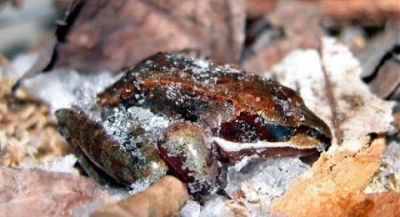
Butterflies are often brightly coloured. They fly during the day and their antennae have rounded ends. Moths have feathery antennae, and fly at night.
Which butterfly can fly thousands of kilometres?
The American monarch butterfly lives in the United States and Canada. When autumn approaches, thousands travel south to Florida, California and Mexico – a journey of over 3,000 kilometres.
Is it true? Butterflies and moths have scales.
Yes. Butterflies and moths have four wings covered with tiny overlapping scales which shimmer in the light. These scales give them their bold patterns and beautiful colours.
Amazing! Before laying eggs, butterflies test food plants with their antennae and tongues to check that the leaves are suitable for their caterpillars. But some also stamp on the leaves, because butterflies, flies and honeybees have taste organs in their feet!
How do caterpillars become butterflies?
When a caterpillar is fully grown, it turns into a pupa. Inside the pupa case the caterpillar’s body breaks down and gradually becomes a butterfly. This change is called metamorphosis.
Picture Credit : Google





